Is there a good alternative to peated compost?
Harvesting peat is highly unsustainable – but gardeners love it. Could we replace it with something better?
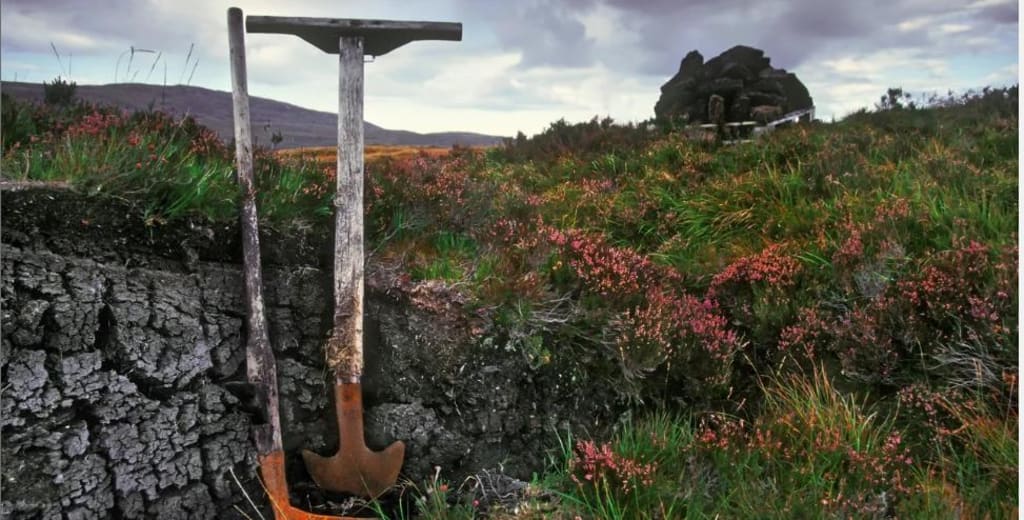
In a greenhouse in Nottinghamshire, Barbara Wright is growing peat.
Well, not peat exactly. Wright's company, BeadaMoss, is growing sphagnum moss – the main component of natural peat extracted from northern peatlands for use in gardens across the US and Europe.
BeadaMoss has been growing sphagnum for around 15 years, initially to plant this on degraded peatlands as a fast-track to peatland restoration. But, sparked by environmental concerns over the use of peat in horticulture and a looming limit on this use in the UK, BeadaMoss is now investigating the best way to grow sphagnum moss as a replacement for the bags of peat-based growing media found widely in garden centres across the world.
Natural peatlands store twice as much carbon as all the world's forests, but they are rapidly disappearing due to widespread extraction. There are finite reserves and peat takes thousands of years to form.
One group that's been particularly resistant to giving it up is gardeners. They use it for fertilising and improving the soil, and as a key ingredient in potting mixes for growing new plants. It's prized for its spongy texture, which allows it to hold onto both water and air – both of which are essential for developing roots.
Peat-free compost has become increasingly available over the last decade, but historically it has been criticised for not being as good – with some replacements accused of being dry, inconsistent or low in nutrients.
But as awareness of the carbon impact of peat has grown, companies and researchers on both sides of the Atlantic are stepping up efforts to find alternative solutions in the quest to replace this extraordinary material.
***
Peat is a natural substance formed of plants (often mosses) which have partially decomposed under waterlogged, anaerobic conditions but still retain their distinctive spongy structure.
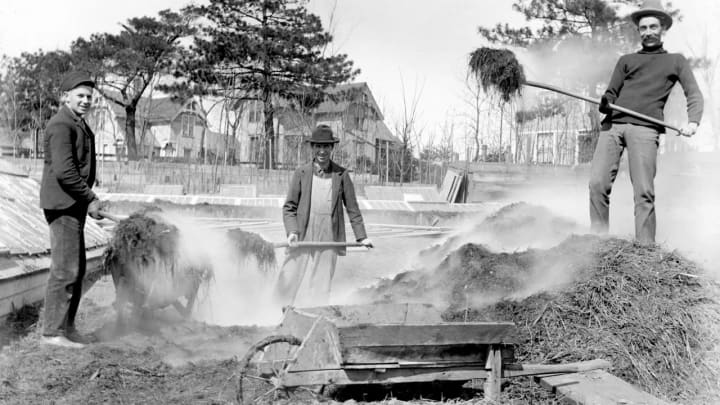
While many different types of peat grow in different places in the world, sphagnum moss – the plant that creates the type of peat typically used in gardening and horticulture – grows in wetland bogs in cold northern climates.
Peat extraction causes a whole array of environmental problems. Firstly, it destroys habitats. "Quite a lot of the plants and insects and other animals that live [in peatlands] don't live anywhere else," says Judith Conroy, a researcher at Coventry University's Centre for Agroecology, Water and Resilience (CAWR). "It's a really unique habitat. And once you dig it up, it becomes a barren wasteland, basically."
You might also like:
The hybrid tree that conquered the world
The promise and danger of Scotland's peat
How to turn your garden into a carbon sink
Peatlands also act as natural flood barriers, as their spongy texture slows the passage of water during heavy rainfall events.
But perhaps the most striking feature of peatlands is the overwhelmingly large amounts of carbon they store. "Roughly 3% of [global] landmass is peatland but it has the potential to absorb and sequester more carbon than all of the vegetation on land, and over thousands of years," says Alistair Griffiths, director of science at the Royal Horticultural Society (RHS). When peat is extracted from peatlands, this carbon is released to the atmosphere.
These issues are compounded by the fact that peat takes a very long time to form – it grows at a rate of around a millimetre per year. "It is kind of like a young fossil fuel," says Conroy. "It's just not been there quite as long as oil or coal; it's been there thousands of years instead of millions of years."
***
Peat first began to be widely used in gardening around the 1940s, says Conroy, but it was really the advent of garden centres in the 1960s and 70s, encouraging the switch from home compost to bagged growing media, when it began to be used more widely.
Some 1.7 million cubic metres (60 million cubic feet) of peat were used in the UK in 2021, although the 2020 boom in lockdown gardening saw a temporary increase to 2.3 million cubic metres (81 million cubic feet). It accounts for 30% of all growing media sold in the UK. However, as most of the UK's peatlands have already been degraded, it imports much of its peat from Ireland and Eastern Europe.

For years, the UK government has discussed limits on the sale of peat. Voluntary targets set to end the sale of peat in home-garden products by 2020 were missed, but in late August 2022 the UK announced a ban for England in 2024. The ban only targets bagged retail growing media, which accounts for 70% of the peat sold in the UK. A voluntary target to end the use of peat in the professional sector by 2030 remains in place.
The long-time threat of this ban has sparked a huge exploration of peat alternatives in the UK, says Brian E Jackson, a horticultural science researcher at North Carolina State University. In North America, meanwhile, which sources the vast majority of its peat from Canada – home to a quarter of the world's peatlands – no regulatory measures are currently on the table, he adds. "In North America, there are very strong efforts going into peat alternatives, but it's more of a proactive approach."There are several reasons peat has become such a well-loved medium for growing plants. Firstly, it has a "nice, crumbly, sieve-able kind of structure" which makes good contact with the fine root hairs of plants, says Conroy. Jackson notes that it also good at holding water and air, has a low salt content and often a low PH – most plants prefer slightly acidic soil.
It's also lightweight to transport, and a relatively "blank canvas" in terms of nutrients. "Manufacturers can just add whatever nutrients they want to, very often synthetic nutrients, and it will hang on to those well and release them, says Conroy.
In addition, many growers have simply become used to it, says Griffiths. "In many ways, it's 'this has worked and still works.'"
The challenge for peat alternatives is to produce something with the necessary physical, chemical and biological properties for growing plants – even if it doesn't exactly emulate peat, says Jackson. Gardeners often expect the peat-free media to be exactly like peat, he adds, but switching to peat-free does usually require a transition – such as changing how plants are fertilised or how they are watered. "In my experience, people have been upset because they expected the same result, not understanding that it's a different material."
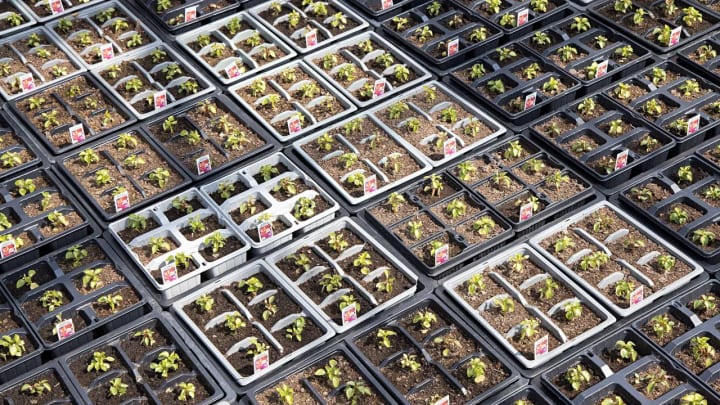
It's crucial that whatever replaces peat doesn't bring its own environmental issues – an especially important consideration for companies planning a large scale-up of peat-free growing media. "A lot of efforts are being done to identify the carbon footprint and the life cycle analysis or circularity of how we use these materials," says Jackson. "But we don't understand everything enough yet to say 'this is truly better than that'."
The research for the perfect replacement for peat is far from over, but many peat-free growing media have already been in use for decades. So what are the main options?
Coir, which is made from the long fibres in the outer husks of coconuts, has been used for decades in growing media and is currently the most widely used peat-free alternative, says Jackson. "It's the close first cousin to peat in properties, and it's been used enough that there's familiarity with how to use it to grow plants."
At the moment, I'm growing some amazing tomatoes in cork granules – Alistair Griffiths
A waste product from a major crop, there is plenty of coir available. However, some coconut plantations have been linked with deforestation, and one downside of its use in places like the UK and US is how far it needs to be transported – much of it comes from India and Sri Lanka. There could arguably be better uses for it more locally, notes Conroy.
However, there is another material that may hold the key to peat-free growing media in the long term: wood. "I think the scientific community across Europe and North America are all in fairly strong agreement that the material that has the greatest potential to be developed further and to be used abundantly is engineered wood fibre," says Jackson.
A benefit here is that many places in the UK and US do have local sources – avoiding the need to transport it long distances. Countries and regions can even develop their own peat-free growing media depending on their local sources – one project in Turkey, for example, is experimenting using clippings from olive trees to make a growing media for new olive saplings to grow in.
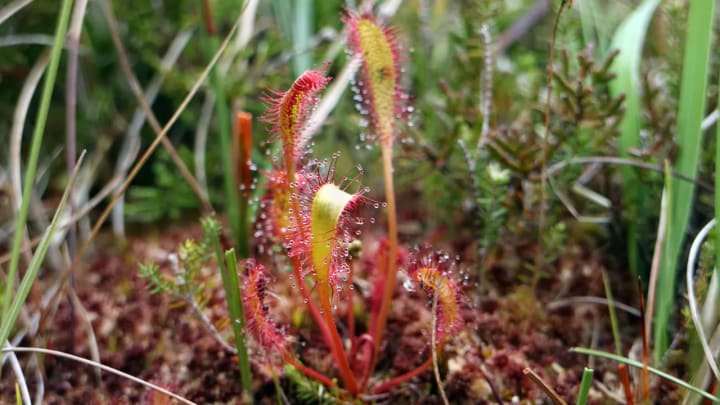
Composted bark, a by-product of the forestry timber industry, is another good option. However, there can be competing industries for those wood by-products, says Conroy. Another barrier to overcome is that, unlike in peat, the microbes that break down wood and bark feed on nitrogen – and can therefore rob this essential food from the plants you're trying to grow if the wood is untreated. "There's been a lot of work on trying to reduce [feeding] from those microbes," says Griffiths.
Green waste is another ingredient with a ready and often cheap local supply. However, it can have contamination issues. "It's basically made from what people put into their green waste bin, [so] it can be contaminated with things like plastic and herbicide residues, especially from grass clippings," says Conroy. If efforts and energies were focused here, however, improving its quality "could happen quite easily", she adds.
As attention increasingly focuses on peat-free alternatives, we can expect to hear of more and more other options. Hemp fibre, wool, miscanthus, almond shells, dairy manure and even human waste are just some of those being investigated. "At the moment, I'm growing some amazing tomatoes in cork granules," notes Griffiths.
***
The ingredients in compost are important, but really the search for peat alternatives is all about finding the perfect blend: what proportions of each of these materials creates a final mix that has ideal water, air and density properties? "You make a soup, and then you've got the benefits of all those ingredients into the final product," says Jackson.
Jackson notes that some products on the market have not been through a thorough enough research and development process. Peat-free media should go through extended trials with different kinds of plants, allowing the company to authoritatively say it works, he says.
Back To The Roots, a California-based gardening startup targeting millennials which initially sold mushroom kits, launched its own peat-free soils with Walmart in 2021. Nikhil Arora, its co-founder, says he was motivated to bring a peat-free growing media to market after finding out the huge carbon impact of peat extraction for horticulture. "That kind of put us on the path of like, how else can we do it?"
The company found itself looking back to research into peat-free growing media from the 1930s, when finding peat for sale on the US West Coast was still a rarity. "We delved into all of that – how were people doing this before there was a global supply chain of peat?"
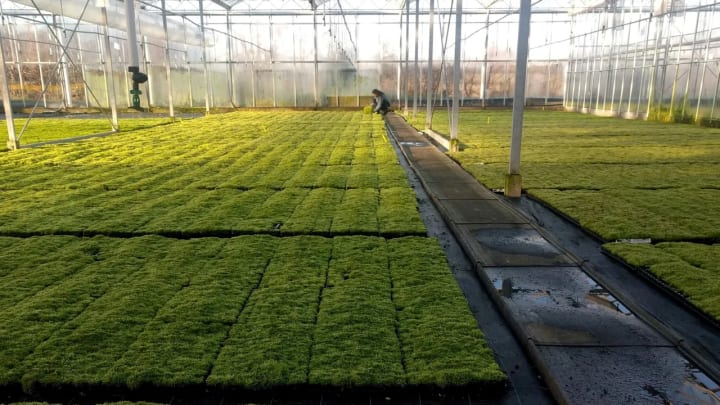
After exploring a variety of ingredients, and testing blends in 60- to 90-day trials, it settled on a mixture of coconut coir, aged wood, digested wood – extruded wood fibres treated under high heat and pressure – and extract from Yucca, a desert plant found in the south-west deserts of North America, which helps the mix to hold water. "We spent a lot of time on different blends, different variations, growth trials, and just making sure that this stacked up to what else is out there," says Arora.
The brand is now set to expand to other stores in 2023. "This next-gen gardener, they're just looking for an organic potting mix, and they trust that it's going to work," says Arora. "I think we as a brand had one shot when we launched for the retailers and for the consumers to make sure it worked really well."
***
Some plants have proven particularly tricky to grow without peat, however, including carnivorous plants, which tend to originate from peatlands. Seed-starting plugs plants for vegetables and salads is another key area where the move away from peat is viewed as especially complicated.
So what if we could actually create peat without extracting it from peatlands? This is BeadaMoss's strategy. "For [around] the last four or five years, we've been exploring how to grow sphagnum at scale to effectively produce a biomass that can go into the growing media industry," says Wright, the director of BeadaMoss. Sphagnum moss grows much faster in controlled conditions like a greenhouse or farm than in its natural environment, she notes, but has very similar physical and chemical properties to peat, since sphagnum is the main ingredient of natural peat.
BeadaMoss creates its sphagnum using "micro-propagation", starting in a lab then moving it to a greenhouse. "We start from perhaps about 12 or 15 stems of sphagnum [moss plants], and from that we can produce an infinite volume of sphagnum," says Wright.
So far BeadaMoss has only grown plants in its sphagnum growing media "BeadaGro" in trial amounts, but it is now testing it in commercial nurseries and looking to scale up sphagnum production to several hectares. It is also screening different sources of sphagnum to find which are easiest to grow and provide the best qualities for growing plants, says Wright.
The RHS is one of the partners trying out BeadaMoss. Its gardens are already "98% peat-free" and plan to be fully peat-free by 2025, but for now, the charity continues to grow a handful of tricky-to-grow plants with peat. The hope is that BeadaMoss can help. The company is trialling the product at the RHS field research site in Surrey.

"There's a number of difficult ones [to grow without peat] – 'ericaceous' or acid-loving plants have been shown to be difficult, and carnivorous plants have seemed to be challenging," says Griffiths. The RHS has not yet released the results of the trial.
However, Conroy notes that some growers are already growing carnivorous plants without the use of peat. "There might be certain uses for it, I think we need to be careful with scaling up making sure that it is a genuinely more sustainable alternative. It's certainly early days with that. But it is something that could have a place and it's certainly better than taking that material from bogs."
BeadaGro won't yet be available to gardeners in England when the ban comes into place in 2024, however. "When it's farmed, it takes three years to grow the crop. So it'll be a while coming," says Wright.
***
Gardeners can also help reduce peat demand by cutting their reliance on bought growing media altogether. Conroy, who used to work as a gardener, says people often lack the confidence to home compost, or have tried it once and become disheartened when it didn't work. She notes that leaf mould made from the leaves of deciduous trees makes a particularly excellent compost, although it takes some time to make.
But a normal compost heap with a mixture of kitchen waste, weeds and some slightly dry material will also make a great ingredient for a growing media, she adds. "Just having a compost heap, not letting it be too wet, not letting it be too dry and giving it enough time to rot down."
There has at times been a similar apprehension about bought peat-free growing media. "Very often, if you do buy the very cheap ones, they are less good," says Conroy. "And they might be a different quality from one year to the next." She thinks the upcoming ban in England will help with this – companies who previously sold peat-free growing media on the side will now need to make it their main business, plus the price of the next-generation alternatives will likely drop.
And Jackson says some companies are already rising to the challenge. "I would say pretty confidently that the biggest innovation in non-p
About the Creator
Mcgrotha Brinker
There are three major principles of academic discipline: broad knowledge, more reading, and diligent experimentation.


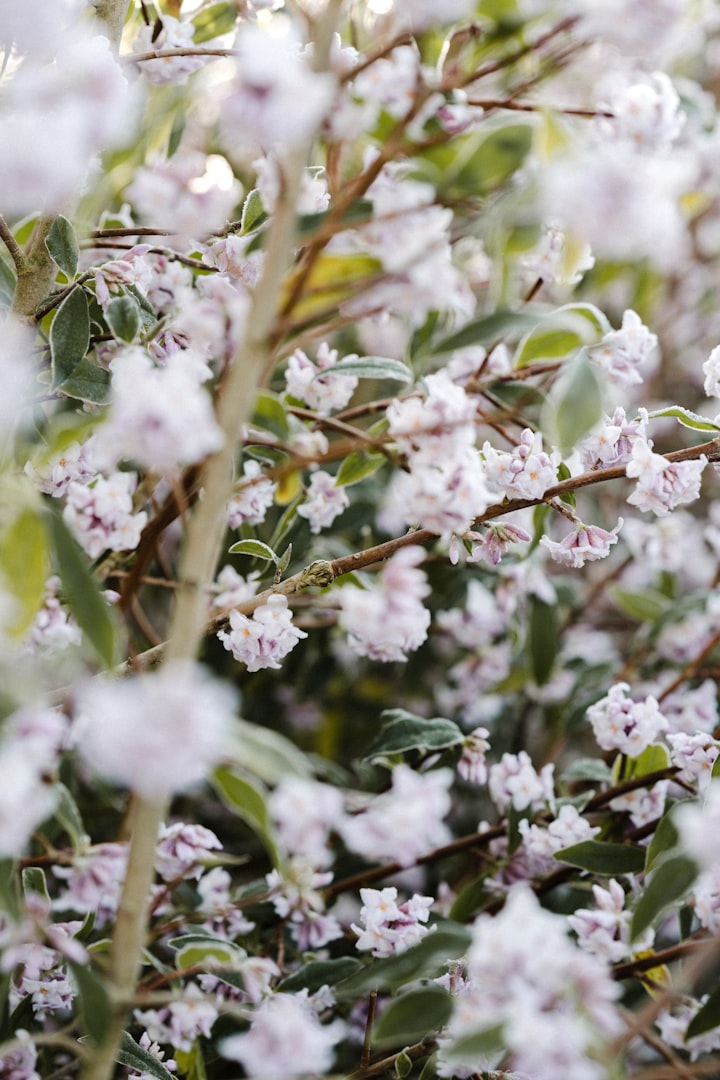



Comments
There are no comments for this story
Be the first to respond and start the conversation.